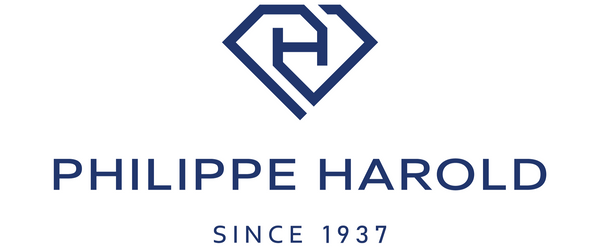Lab Grown Diamonds and Real Diamonds: What You Need to Know

Choosing Between Lab Grown and Natural Diamonds
Are you looking for the perfect diamond but unsure whether to choose a lab grown or a natural one? Whether it’s for an engagement ring or a personal statement piece, understanding the differences can help you make a smart andethical choice.
On the one hand, lab grown diamonds are real diamonds created in a lab using advanced technology. On the other hand, natural diamonds are formed deep within the Earth over billions of years.
At Philippe Harold, we’re here to guide you through your decision with expert advice and certified quality — so you can choose with confidence.
Understanding the 4 Cs of Diamonds
Cut
First, the cut refers to the diamond’s proportions, symmetry, and polish. A well-cut diamond maximises brilliance and sparkle.
Colour
Next, colour is graded from D (completely colourless) to Z (light yellow or brown). The less colour, the more valuable the diamond.
Clarity
Then, clarity indicates the presence of internal or external flaws, known as inclusions or blemishes. Fewer flaws mean a clearer, more valuable stone.
Carat
Finally, carat refers to the diamond’s weight (1 carat = 0.2g). Larger diamonds are rarer — and therefore, more expensive.
Tip: At Philippe Harold, we help you choose the right balance between these factors, tailored to your personal style and budget.
What Are Lab Grown Diamonds?
Lab grown diamonds are chemically and visually identical to natural diamonds. They’re created using CVD or HPHT methods, which simulate the Earth’s natural conditions — but in a lab and over the course of just a few weeks.
Compared to mined diamonds, lab grown diamonds offer several key advantages:
- They cost 60–80% less
- They raise no ethical concerns around sourcing
- They have a more environmentally friendly production process
While some may still have an emotional preference for “naturally formed” stones, lab grown diamonds offer exceptional value, sustainability, and beauty — making them a smart and conscious choice.
Comparing Price and Long-Term Value of Lab Grown and Natural Diamonds
Lab diamonds are more affordable due to efficient production and abundant availability.
- Natural diamonds retain value slightly better over time
- Lab diamonds: great for those wanting a larger carat within budget
- Long-term resale value of both types is generally lower than purchase price
Ethical & Environmental Considerations
The Issues with Diamond Mining
- Environmental damage
- Worker exploitation
- Conflict diamonds (blood diamonds)
Solutions and Certifications
- Kimberley Process Certification Scheme (KPCS) helps prevent trade in conflict diamonds
- Recycled/antique diamonds are another ethical choice
- Lab diamonds avoid these issues entirely
Certification and Trust: GIA & IGI
At Philippe Harold, we only source GIA and IGI certified lab diamonds.
These certifications include:
- Grading of the 4 Cs
- Proof of ethical origin
- Laser-inscribed ID numbers
We offer both lab and natural diamonds with full transparency and personal guidance.
Final Thoughts: Which Diamond Is Right for You?
Whether you choose a rare, naturally formed stone or a sustainable, lab grown diamond, your decision should reflect your values, style, and budget.
That’s why, at Philippe Harold, we make that journey easy and trustworthy — from first questions to final choice.
You can either browse our certified collections or book a consultation for a custom piece that’s beautiful, ethical, andmade to last.
Looking for a bespoke piece? Start your journey with a private consultation.
